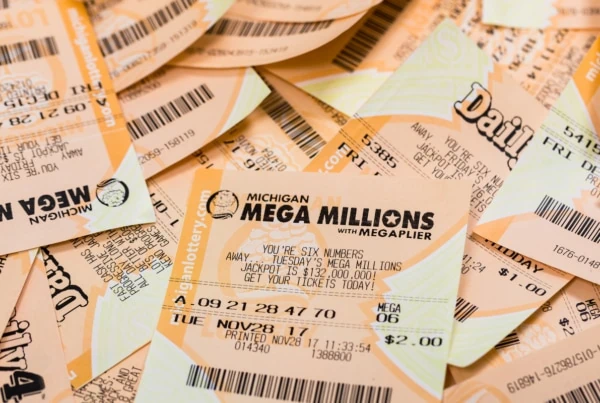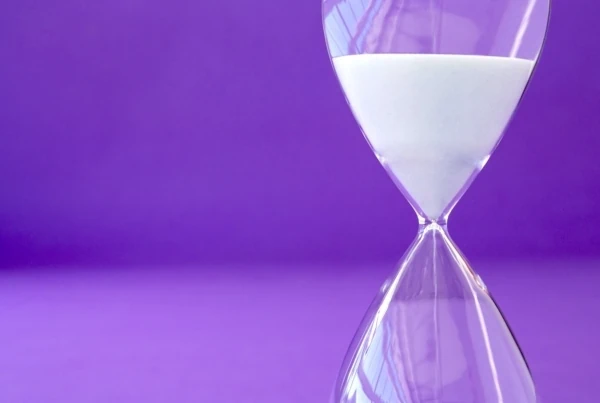Tax season is in full swing—but we didn’t have to tell you that. Social media platforms have become venting pillows for millions of Americans bemoaning the various types of taxes they have to pay throughout the year.
But at least you can chip away at those taxes with credits, deductions, and exemptions—which isn’t the case for anyone subject to the pink tax. That’s largely because the so-called pink tax isn’t technically a tax, though it’s still a constant drain on the wallets of tens of millions of Americans.
Read on as we explain what the pink tax is and the many ways in which half the country is forced to pay it almost every day.
What Is the Pink Tax?

The term “pink tax” refers to the many ways women are forced to pay more than their fair share.
It could be overpriced products that are just for women (see: feminine hygiene products). Sometimes it’s gender-based price discrimination, where women are charged more than men for the very same service. Other times, it’s goods that both men and women use, but the version marketed to women either costs more or is of lesser quality. Not to mention, there’s also a whole host of women’s products that aren’t essential, but that the media insists women need more than men.
A comprehensive 2015 New York City Department of Consumer Affairs study found that, on average, women’s products cost more—and the effect is larger in some industries than others (specifically personal care, where prices were 13% higher). The pink tax hasn’t gone away since then—while it varies by what part of the U.S. was surveyed, various studies from the past year or two show that women pay between roughly $1,000-$2,500 in “pink tax” every year.
Let’s go over some of the most blatant examples to show how the pink tax exists today, and why there’s such a disparity. When I’m done with that, we’ll discuss what can be done about the pink tax.
Pink Tax Examples

Here is just a sample of products and services that cost women more than men, are only sold to women, and/or are inferior in quality to men’s products.
1. Homes

Home prices aren’t among the most widely known examples of the pink tax at play, but they’re certainly among the most costly.
According to a study from the Yale School of Management, single women pay more when buying a home and get less when selling one. The study collected data from more than 50 million housing transactions and accounted for demographic factors including income, education, age, ethnicity, listing agent, and type of home.
The results? On average, single women purchase houses for 2% more than their male counterparts … and then they sell those houses for 2% less. If that doesn’t sound all that significant, consider that a 2% surcharge on the $413,200 U.S. median price for a new home comes out to $8,264—so women are either paying $8,264 more to buy, or getting shortchanged by $8,264 when they sell. (And if they’re selling one home to buy another one, they’re getting hit by the pink tax twice!)
The difference? Likely gender expectations. Women are presumed to be more generous and open to negotiation. Meanwhile, men are stereotyped as being more ruthless. Unsurprisingly, women tend to get the fairest transactions when they deal with other women.
2. Car Purchases, Services, Repairs

Men are perceived as knowing more about vehicles than women. So regardless of whether that’s true, one’s gender affects how much people try to charge them for car purchases, services, and repairs.
Jerry, an insurance agency, used data from multiple studies to calculate how much prices are marked up when women want to buy a new car or get repairs done. The results:
“Women were quoted approximately $22.94 more than men on the same auto repair when they neglected to ask for a price, and were quoted about $117.12 more than men for the same new car.”
Anecdotally, I’ve heard plenty of stories from friends and colleagues about other ways men and women are treated differently at dealerships and repair shops. One of the most jarring was dealership representatives starting out with serious questions when a man is looking for a new car, but less critical questions (“what color do you want?”) when engaging with a woman.
Related: 20 Big-Ticket Items Worth Splurging On
3. Feminine Hygiene Products

You’ll often hear the term “tampon tax” alongside the pink tax. Again, this is a broader term that includes not just tampons, but all feminine hygiene products.
But the tampon tax does refer to an actual tax—specifically, the sales or value-added tax slapped on to most goods.
You see, many states exempt essential goods such as groceries and medical items from sales or value-added tax—but they still tax menstrual products even though they’re every bit as essential.
The issue is at least improving; many states, as well as the District of Columbia, have exempted tampons from sales tax. Still, as of the start of 2024, 21 states continue to charge the “tampon tax” on period products. (And in many states, some counties and cities impose an additional tax.)
Related: 8 Special Tax Breaks for Senior Citizens
4. Razors

Societal beauty expectations still deem body hair as a masculine trait. Typically, men aren’t chastised for hairy legs or armpits the way women often are.
But not only are women expected to do more hair removal—it’s often pricier for them to remove it, too
A study published in the International Journal of Women’s Dermatology compared the prices of disposable razors sold by Amazon, Target, and Walmart in 2020. They identified 83 razors “for men,” 86 “for women,” and seven gender-neutral ones. Results showed women’s five-blade razors priced 47% higher than men’s and four-blade razors priced 66% higher.
Related: 10 Items You Should Always Buy New
5. Haircuts

Haircuts are something of a gray area as it pertains to the pink tax.
On the one hand, women do typically have longer hair than men, which can be more work and thus merits charging a higher price. This has even bled into naming conventions—a haircare location referred to as a salon typically serves mostly women and charges higher prices, while barbershops typically serve mostly men and charge lower prices.
Where this falls into pink tax territory is that many haircare shops list different prices solely based on gender—one price for men, another for women—regardless of length. That’s a great deal for a man with waist-length hair, but not so much for a woman who just wants a touch-up on her pixie cut.
Fortunately, this form of the pink tax is becoming less common. Several budget haircut chains have started posting the same rates for all adults, regardless of gender. And many smaller salons will simply quote you based on hair length and the difficulty of the ‘do.
Related: Consumers Are Drawing the Line at These Too Expensive Products + Services
6. Shampoo + Conditioner

Men and women also have different expectations about how they need to care for their hair.
Price discrepancy isn’t as much of an issue as you’d think it is. We’re not perfectly comparing apples to apples here, but consider that as of the end of 2023, a survey on Statista found that the most popular men’s shampoo brand in the U.S. was Head & Shoulders, while the most popular women’s shampoo brand in the U.S. was Herbal Essences. Right now, Target lists Head & Shoulders’ 28.2 fl. oz. Classic Clean 2-in-1 shampoo and conditioner for $11.49. And it lists various 29.2 fl. oz. Herbal Essences shampoos at $9.99.
No, the problem here spawns from embedded societal expectations.
Marketing hammers home the message that women need separate shampoo and conditioner, but men are often told one product can handle both. So once you factor in that women also need to buy the $9.99 conditioner, you’re looking at a higher overall price for clean, soft hair. (Also, maybe it’s just the marketing getting to me, but I’ve never found a combination product that seems to both clean and condition well.)
On top of that, hair masks, oils, and other hydrating products also tend to be marketed much more frequently to women, and rarely to men.
Related: 14 Items to Buy in Bulk + 7 You NEVER Should
7. Makeup

Makeup is a different animal. It’s not that women pay more for the same makeup men use, or that men’s makeup is better than women’s makeup—for the most part, men use little to no makeup, and it’s hardly ever marketed to them.
Where the pink tax comes in is that women are made to feel like makeup is not, in fact, a luxury, but a necessity. And in a way, it kind of is. That’s because studies show that a person’s level of attractiveness is a factor in securing jobs and earning higher pay—for both women and men.
A study published by the Society for Personality and Social Psychology focused on undergraduate and graduate students preparing to apply for jobs. Each student made a three-minute “elevator pitch” video about their qualifications. Two separate sets of people rated the videos. One group rated each participant’s physical attractiveness. The others rated their personality in terms of confidence and enthusiasm. Finally, actual managers rated each participant on hirability.
Results showed that the students who were considered more attractive came across as more confident and enthusiastic. They also earned better hirability ratings.
What does all of this have to do with makeup? Many women believe (and in fact, are sometimes outright told that) makeup makes them look more attractive. Thus, wearing makeup increases their confidence and employers’ overall perception of them, which can translate to improved career success. Consider this one of the more insidious pink taxes.
Make sure you sign up for The Weekend Tea, WealthUp’s free weekly newsletter that over 10k monthly readers use to level up their money know-how.
8. Medical Costs

Data from Deloitte shows that women experience disproportionately higher out-of-pocket medical costs—a situation that holds true even when you exclude pregnancy-related expenses. Deloitte found that, on average, women under single-person coverage pay about $266 more annually in out-of-pocket costs.
While the Affordable Care Act mandates insurers to charge men and women the same premium costs, Deloitte found that insurance covers less of women’s health claims than it does for their male counterparts.
There are a couple of possible reasons for this. Perhaps women get more follow-up services after preventative care, such as a pap smear or mammogram. Or, women might tend to have worse insurance plans. Either way, the pink tax appears to be prevalent in health care, too.
Related: 6 Common HSA Mistakes to Avoid
9. Long-Term Care Insurance

Long-term care insurance can cover costs such as in-home care, nursing home care, and assisted living. These services are expensive and usually not covered by health insurance or Medicare.
The two main factors that influence long-term care insurance are your sex and age. For example, according to the American Association for Long-Term Care Insurance, 2022 rates for a 65-year-old single man were $141.66 per month, while a woman of the same age was paying $225 per month.
Here, however, the gender-based price difference is just sound business sense. Statistically, women live longer than men, and thus are more likely to require long-term care.
Related: Frugal vs Cheap: What’s the Difference
10. Toys

Think the pink tax only kicks in once you’re grown up? Think again.
Research conducted by Starling Bank in partnership with Loughborough University found that toys marketed to girls cost 5.48% more than those targeting boys.
This is the most literal example of the pink tax, too, in that pink toys tend to cost more than toys of other colors. The study showed that pink toys cost an average of 5.16% more than those marketed to be gender-neutral. (And no, pink paint does not cost more than paints of other colors.)
The difference is enough for many parents to notice the disparity. According to a study by the U.K.’s Starling Bank, about 25% of surveyed parents said toys targeting girls seem to cost more.
The gender pay gap appears to start young, too. In addition to having more expensive toys targeted toward them, Starling’s research also showed that girls tend to receive less in allowance than boys.
Related: Feeling Thrifty? How to Save Money at Thrift Stores
Women Deal With More Than Just Price Discrimination
The pink tax isn’t the only financial handicap women have to suffer.
Women have been fighting the gender pay gap for decades—and unfortunately, with little to show for it. According to the Pew Research Center, American women typically earned 80 cents for every dollar men made in 2002. Fast-forward 20 years, and that chasm only narrowed a bit, to 82 cents.
Furthermore, women are more likely to need to take time off from work to start raising a family because of the physical demands of childbirth, parents’ decisions to breastfeed, and more. This work gap, even if short, can be the difference in whether or not a woman gets a new job, promotion, or raise.
Related: Want to Become More Minimalist? Start by Tossing Out These Items
Is the Pink Tax Legal?
By default, the pink tax is legal because there isn’t a federal pink tax ban prohibiting gender-based price discrimination. Not that there haven’t been attempts to curb the issue. In 2016, 2018, and 2021, former Rep. Jackie Speier, D-California, tried to push ahead with the Pink Tax Repeal Act, which tried to prohibit product manufacturers from selling nearly identical products at different price points based on the target gender. However, the bill never saw the light of day.
Individual states have had a little more luck. For example, California’s Gender Tax Repeal Act of 1995 states that no types of businesses can “discriminate, with respect to the price charged for services of similar or like kind, against a person because of the person’s gender.”
Look, gender-based price discrimination doesn’t just happen because all businesses inherently want women to pay more. Gender-based tariffs often make importing items classified as female more expensive.
There are a few categories where mens’ apparel tariffs are higher, but overall, women get the short stick—even if the items are of similar quality to those classified as male items. So if the tariff on women’s shoes is higher than that of men’s shoes, that additional cost is typically passed onto the consumers. So, partial fault here goes to the discriminatory tariffs.
How to Combat the Pink Tax
Good news, ladies: There are a few ways you can fight the pink tax.
Don’t Buy Products Marketed to a Specific Gender
Gender-neutral products are often more affordable. If you see a pink toolbox or kids’ science set called “Girls’ First Science Kit,” keep looking. Not only could you save money as an individual, but if businesses find marketing toward one gender isn’t making them more money, they’re likely to change their strategy.
Negotiate Harder
You might have heard people explain away the pay gap by saying that women negotiate their salaries less than men. However, recent research published by the Academy of Management Discoveries suggests women negotiate their salaries more often than men, yet still earn less.
So my advice is to negotiate harder, and not just at work. Be firm in what you’re willing to pay for a car or home. If you think you’re getting a raw deal because you’re a woman, consider looking elsewhere.
Support Initiatives Like the Pink Tax Repeal Act
Individuals can only do so much. For lasting change, you need help from the law. Read up on what your state is doing to combat the Pink Tax and show your support.
Make sure you sign up for The Weekend Tea, WealthUp’s free weekly newsletter that over 10k monthly readers use to level up their money know-how.






![Child Tax Credit FAQs [What Every Parent Needs to Know] 27 child tax credit parents kissing baby](https://wealthup.com/wp-content/uploads/child-tax-credit-parents-kissing-baby-600x403.webp)

